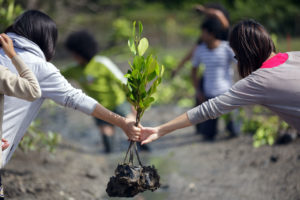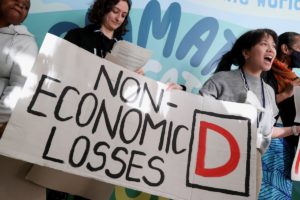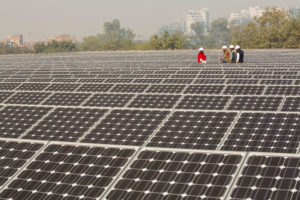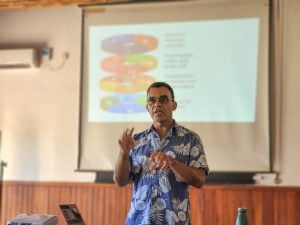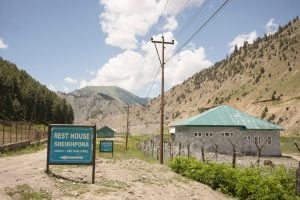The effects of climate change are being felt across the world. As temperatures continue to rise, South Asia is among the regions set to be most severely impacted. Much discussion on the international stage has focused on adapting to the effects of a changing climate. But in some cases, ecosystems are already damaged beyond repair, permanently disrupting the lives of the communities they sustain. In climate change diplomacy, these irreparable consequences are known as “loss and damage”.
South Asia has been experiencing major political upheavals – the ousting of Sheikh Hasina’s government in Bangladesh, a post-election political crisis in Pakistan, and Taliban rule in Afghanistan.
On top of these crises, climate disasters will only make the region more vulnerable to food insecurity and economic downturns, exacerbating poverty and inequality. And a lack of financial support for loss and damage from developed nations will manifest as debt distress for South Asian countries.
• What is loss and damage from climate change?
• How does loss and damage affect India and South Asia?
• How much loss and damage will South Asia face from climate change?
• Why is loss and damage an issue of contention?
• What does the Paris Agreement say about loss and damage?
• How much funding goes into loss and damage?
• Is an adequate loss and damage fund likely to materialise?
What is loss and damage from climate change?
The impacts of climate change include more frequent and intense floods, heatwaves, storms, and sea level rise. While people can adapt to some of these changes in their environment, in many instances adaptation is impossible: lives are lost, embankments broken, land rendered infertile, habitat changed permanently and livestock killed. The social and financial impacts of climate change that cannot be avoided are referred to as “loss and damage”.
Loss and damage from climate change may be economic or non-economic. Economic losses include financial losses suffered by businesses, such as severe heatwaves in India causing a reduction in the yield of wheat and affecting the livelihoods of many farmers. It could also mean a loss of property and infrastructure, such as homes being washed away in floods that are becoming more frequent and severe.
Non-economic loss and damage could include the loss of lives, as well as the loss of cultural traditions, indigenous knowledge, biodiversity and ecosystem services.
How does loss and damage affect India and South Asia?
Between 2019 and 2023, 82.1 million people were affected by weather-related disasters in South Asia, according to data compiled by the Centre for Research on the Epidemiology of Disasters. In 2022, the majority of deaths due to natural disasters in Asia occurred in South Asia, predominantly due to Pakistan’s “unprecedented” floods that year: an estimated 33 million people were affected.
Multiple reports from the Intergovernmental Panel on Climate Change (IPCC) have identified South Asia as particularly vulnerable to weather extremes.
As the climate warms, such disasters are set to become more frequent and intense, potentially creating immense loss and damage for South Asia.
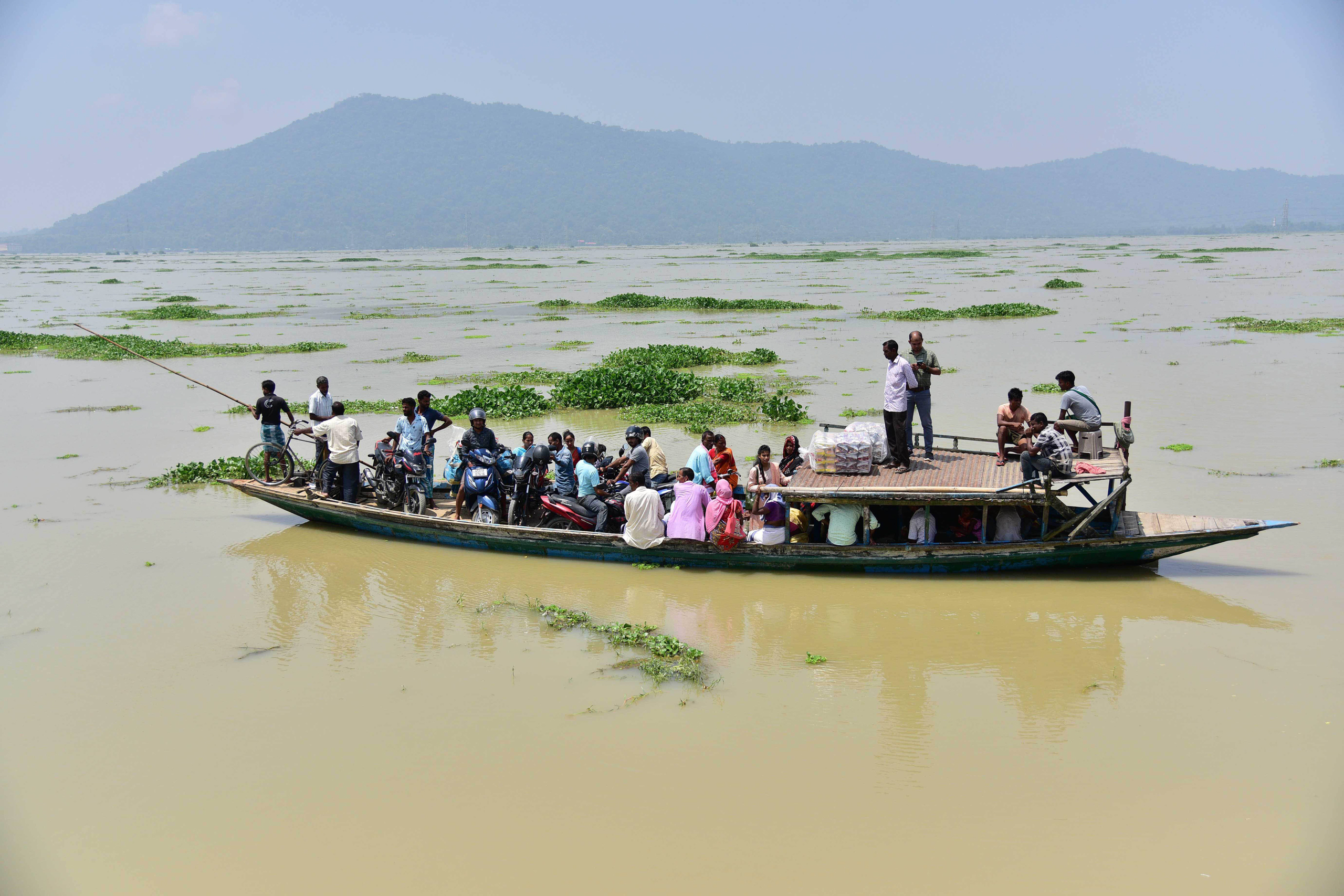
Given the huge potential economic and humanitarian impacts of these changes, how the world measures and pays for loss and damage is hugely significant to the future of South Asia and all developing countries. With lives and livelihoods at stake, countries in the region and elsewhere have been pushing for serious discussions on loss and damage at the global level to support their recovery and to prepare for future disruption.
How much loss and damage will South Asia face from climate change?
A study published by Nature in April 2024 found that South Asia will experience a median income loss of 22% by 2050 due to climate change impacts. And a 2018 study, led by Australia’s Crawford School of Public Policy, estimated that 3C of global warming above pre-industrial levels would cause India’s GDP to fall by 2.1% by 2037, then 5.5% by 2067.
As of 2022, almost 65% of South Asians lived in rural areas dependent on agriculture: the sector represents 18% of South Asia’s gross domestic product (GDP) and 42% of its total employment. But agriculture is severely affected by climate change, which impacts crop production, aggravates market prices and increases regional food insecurity.
A key 2022 IPCC report on climate impacts emphasised how economic damage resulting from floods, cyclones and heatwaves, as well as slow-moving crises like declining agricultural productivity, would severely affect South Asia.
It should be said that South Asia is already facing huge costs from extreme weather events: a study by the NGO Germanwatch ranked India seventh among countries most affected by extreme weather in 2019, noting that massive floods that year caused damage of around USD 10 billion, claiming 1,800 lives and displacing around 1.8 million people.
Every year, India and other countries in South Asia also suffer immense damage from tropical cyclones. While increasingly sophisticated weather warnings have drastically reduced the number of lives lost, homes and sources of livelihood are invariably wiped out with each storm.
Super cyclone Amphan, which hit India and Bangladesh in 2020, caused losses worth an estimated USD 14 billion, displacing 2.4 million people in India and 2.5 million in Bangladesh. Four years later, cyclone Remal made landfall in the same region. The resulting damages cost approximately USD 600 million, affecting fisheries, housing, roads and more.
Such extreme weather events are set to become more severe and erratic as the climate warms. This will make it harder for meteorologists to issue timely warnings as storms develop.
Climate change-induced loss and damage is projected to cost South Asia USD 518 billion by 2050, according to a 2019 study that used 2005 prices. By 2070, this number could jump to USD 997 billion.
Why is loss and damage an issue of contention?
Loss and damage has become a contentious issue in international climate negotiations due to the issue of liability and compensation. Developed countries – those historically responsible for the majority of greenhouse gas emitted since the industrial revolution – have been wary of any international agreement that might leave the door open to them paying for the loss and damage their emissions have caused, and are causing.
In theory, an agreement of this nature became a reality in 2023, at the UN’s annual climate change COP (Conference of the Parties to the UN Framework Convention on Climate Change). Hosted in Dubai, COP28 included the operationalisation and capitalisation of a loss and damage fund. However, the initial pledges amounted to less than 0.2% of the total annual losses experienced by developing nations.
What does the Paris Agreement say about loss and damage?
Article 8 of the Paris Agreement, signed in 2015 at COP21, focuses on loss and damage. It states that signatory countries recognise “the importance of averting, minimising and addressing loss and damage associated with the adverse effects of climate change,” and that they should enhance cooperation on implementing solutions.
While the inclusion of dedicated language on loss and damage in the Paris Agreement gave it a formal platform (which developing countries had pushed for), the way it was framed aligned with the preferences of developed countries. Paragraph 52 of the decision adopted alongside the Paris Agreement states: “Article 8 of the Agreement does not involve or provide a basis for any liability or compensation.”
This means the Paris Agreement does not place any legally binding obligations on countries to address loss and damage associated with climate change and makes no mention of financial commitments to support those countries facing significant loss and damage.
How much funding goes into loss and damage?
While the UN creeps towards establishing an adequate loss and damage fund, some independent efforts have been made to support vulnerable countries. A group of philanthropic organisations led by the Children’s Investment Fund Foundation offered USD 3 million for a loss and damage finance facility in 2021. That same year at COP26, the Wallonia region of Belgium pledged EUR 1 million (USD 1.1 million) and the host nation Scotland pledged GBP 2 million (USD 2.6 million).
However, these figures pale in comparison to the estimated costs. The 2019 book, Loss and Damage from Climate Change, estimates somewhere in the range of USD 290-580 billion will be required annually to cover loss and damage in developing nations by 2030. (The book was co-edited by the International Institute for Applied Systems Analysis in Austria and the London School of Economics; the authors used prices from 2005 for this estimate.) This range is wide because it considers multiple possible emissions-reduction scenarios.
Is an adequate loss and damage fund likely to materialise?
During COP28 in Dubai, approximately USD 700 million was pledged by developed nations for the new loss and damage fund.
This included promised amounts from the United Arab Emirates, Germany, Italy, France, Japan, Canada, Denmark, Ireland, Slovenia, the EU and the US. This sum is not even 1% of the estimated USD 400 billion that developing countries require every year to pay for losses and damages caused by climate change.
In the wake of such insufficient progress, experts from the Global South began pushing for more ambition: the New Collective Quantified Goal. If this effort gains momentum during future climate change conferences and negotiations, it could provide at least USD 1 trillion per year for developing countries in the form of grants and concessional finance.
This is an updated version of the explainer, which was first published in July 2022.


